Art World
From David Hockney to Salvador Dalí: 10 Artists Who Were Inspired by Their Pets
Some artists turn to their animal companions for inspiration, others for comfort.
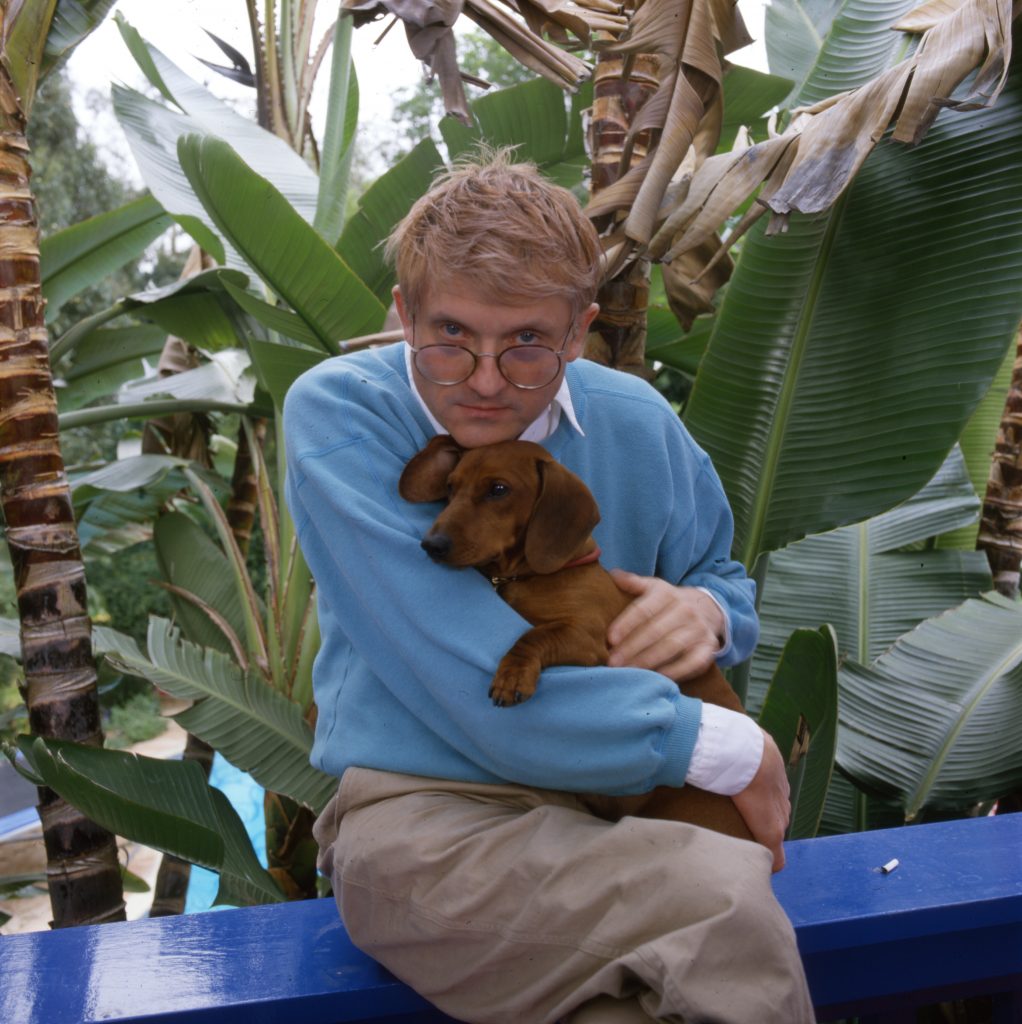
Some artists turn to their animal companions for inspiration, others for comfort.

Richard Whiddington

Ever since humankind’s cave-dwelling days, animals have been a preferred artistic subject. Serving both captive and devotional functions, there’s a meandering line from cave paintings to the sacred animals of Egyptian papyri, to the unicorns of Medieval tapestries and the formaldehyde beasts of Damien Hirst.
On the domesticated front, animals have forever been sources of comfort and inspiration to artists. Leonardo’s 1517 chalk and pen studies of cats lounging and lunging, preening and playing, show an artist who kept felines and observed them closely. Some artists have gone further, featuring their pets prominently in their work. Others offer up symbolic meaning through their pets, or else simply sought something soft to stroke as they worked.
Here are 10 artists and the pets they kept.
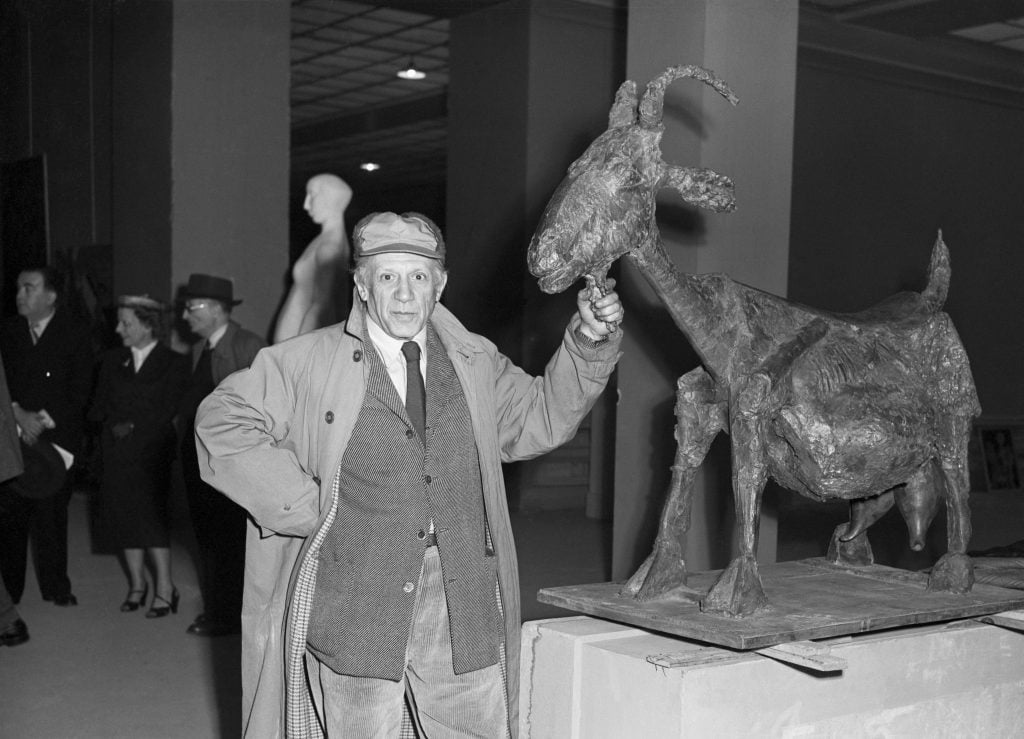
Pablo Picasso displays a semi-abstract goat in bronze. in the annual May Salon Exhibition in Paris. Image: Getty Images.
Yes, Picasso had a beloved Dachshund called Lump (eternalized with its own Wikipedia page) who he featured widely, including in multiple studies for Las Meninas (1957). Less known is Picasso’s affection for Esmeralda, a goat his second wife Jacqueline Roque gifted him during his relocation to Aix-en-Provence. The animal was a recurrent motif for Picasso in the 1950s, most famously with She-Goat (1950), his bronze assemblage that includes a wicker basket body and ceramic flowerpots.
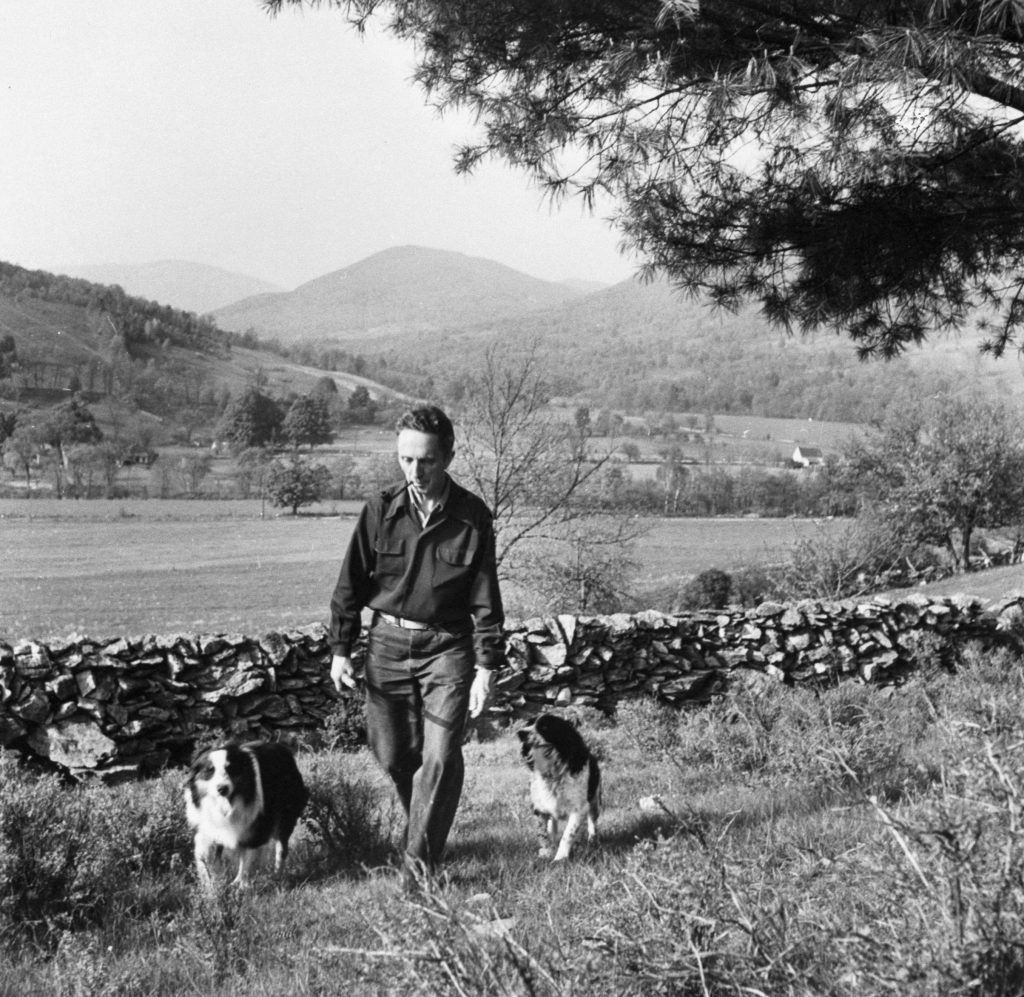
Rockwell walking outside his Vermont studio with dogs. Image: Getty Images.
For nearly 50 years, Rockwell’s idealized depictions of American life fronted the nation’s newspapers and magazines. Dogs were very much a part of this vision and appeared in numerous illustrations throughout his long career. They often accompanied him to the studio, napping beside him as he worked.
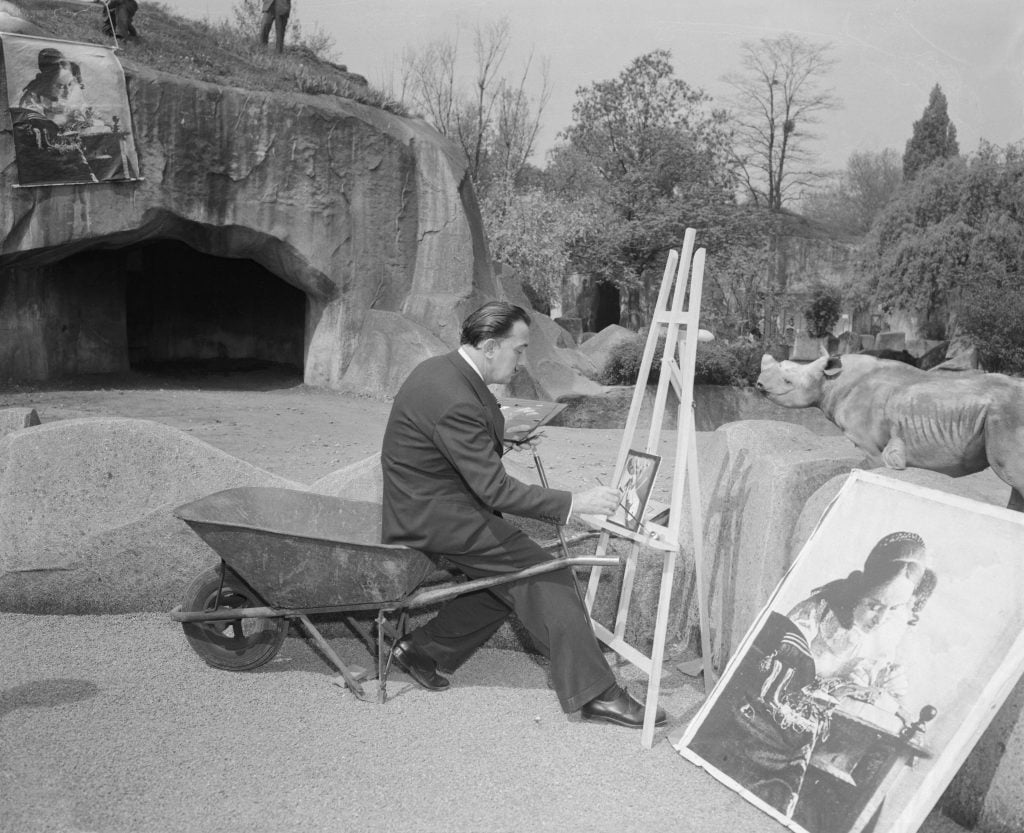
Salvador Dalí sits on a wheelbarrow inside the Vincennes Zoo painting a rhino. Image: Getty Images.
When Dalí appeared on The Dick Cavett Show in 1971, he carried an anteater, one he abruptly tossed aside and allowed to scuttle around the studio. Dalí had borrowed the mammal from the Bronx zoo and claimed on air that he had six at home in Spain. Anteaters and violent rhinoceroses, he said, were the only angelic animals on account of their tongues. In the 1950s, Dalí had encouraged a rhino housed at the Vincennes Zoo to smash, stamp, and eat his paintings.
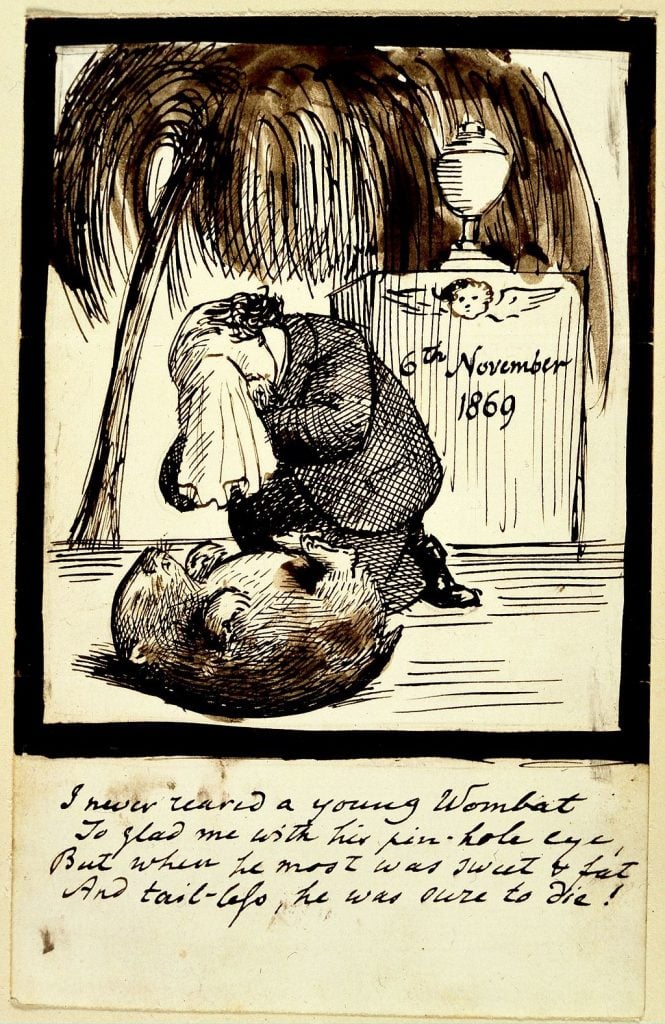
Dante Gabriel Rossetti, Death of a Wombat (1869). Image: Rossetti Archive.
Of all the wild and alien creatures on show at Regent’s Park Zoo, it was the mild-mannered wombat that most captivated the 19th-century illustrator Dante Gabriel Rossetti. In 1869, it became a long-awaited addition to a menagerie that included owls, armadillos, kangaroos, and wallabies. Rossetti penned poems and sketches about the Australian marsupial, an interest quickly shared by his Pre-Raphaelite gang. The obsession outlived the animal itself. Within months the wombat was dead and stood stuffed in his hallway.
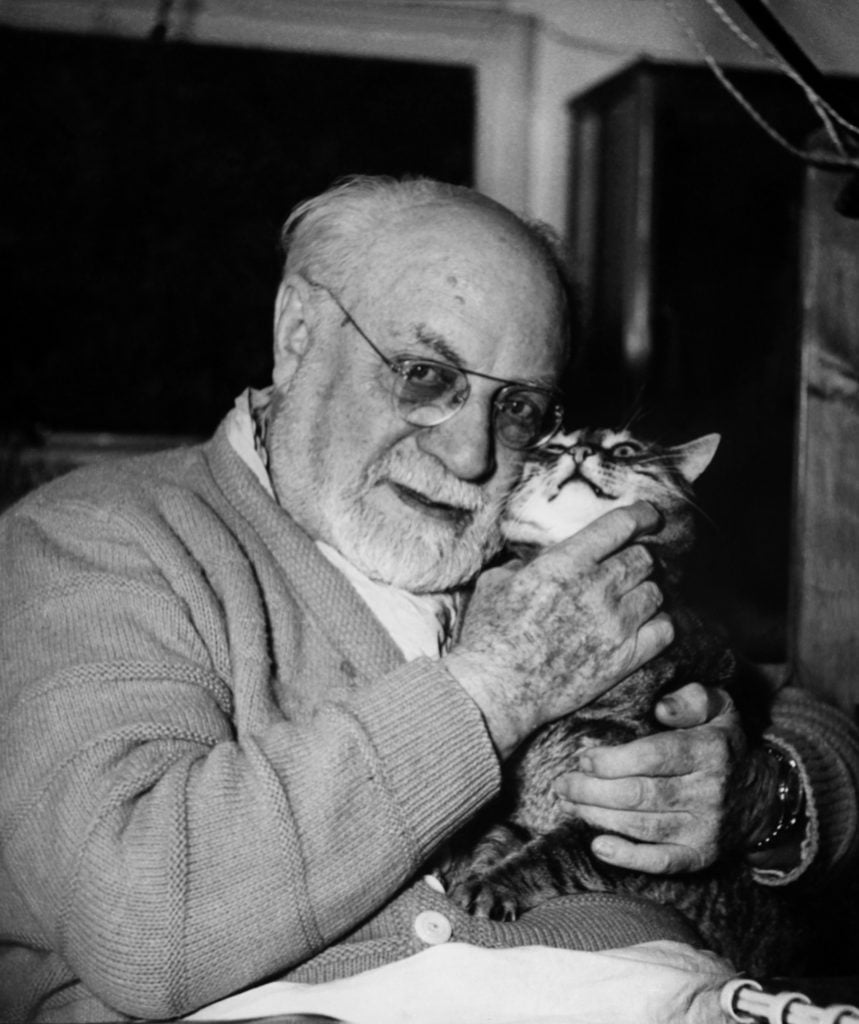
Henri Matisse with cat (1951). Photo: Michel MAKO/Gamma-Rapho via Getty Images.
The quintessential latter-life image of Henri Matisse is that of the French master of color working in bed. Often, he was accompanied by his cats Minouche, Coussi, and La Puce (flea), whom he was fond of feeding brioche.
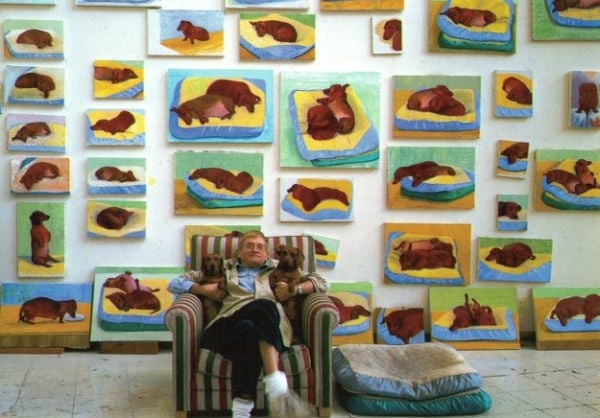
David Hockney and his pet dachshunds Stanley and Boodgie photographed in front of some of the artist’s many artworks based on the dogs. Courtesy of Thames and Hudson.
In 1995, Hockney staged “Dog Days”, a 45 painting show of his dachshunds, Stanley and Boodgie. Acquired in a time of intense personal difficulty, he found solace and inspiration in his sausage dogs and set up easels around his Los Angles home so as to capture them in a brisk and ad hoc manner. Hockney is in good company, Warhol and Picasso also doted on dachshunds.
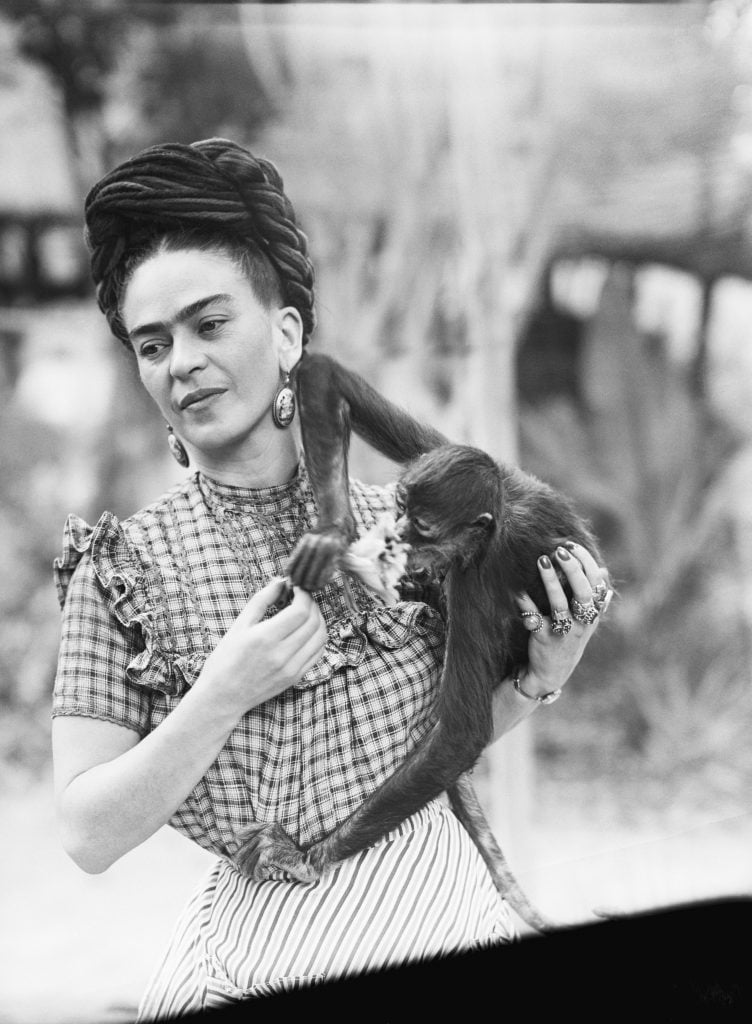
Frida Kahlo holding a monkey. Image: Sylvia Salmi/Bettmann via Getty Images.
Kahlo said the reason she painted so many self-portraits was that she was often alone. Strictly speaking, this wasn’t true. In the background of nearly half of her 143 paintings are the animals she lived with at her home in Mexico City. She kept chickens, parrots, a deer named Granizo, spider monkeys, eagles, and hairless pre-Hispanic dogs. When painted, each animal offered up a specific symbolic meaning drawn from Mexican mythology.
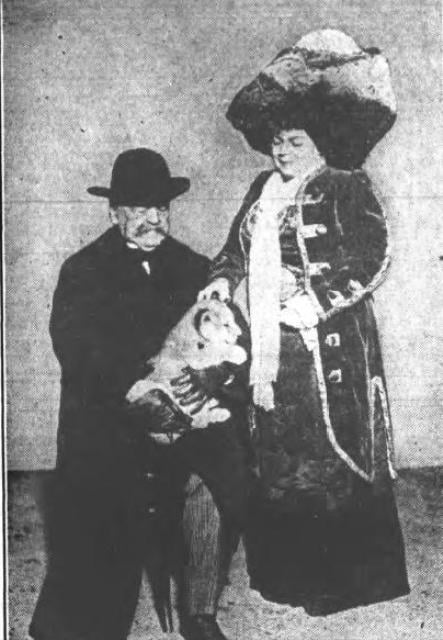
Civil War hero General Daniel E. Sickles and Princess Elisabeth Vilma Lwoff-Parlaghy with a lion cub. Image: The Hempstead Sentinel.
Though little known today, at the turn of the 20th century, the Hungarian-born, Academy of Arts trained painter, travelled the world as a highly sought-after portraitist. Upon settling in New York in 1908, Lwoff-Parlaghy had a menagerie that included a Pomeranian, an owl, a pair of alligators, and a bear (the Waldorf-Astoria refused her, the Plaza obliged). Enamoured with a lion cub she saw at the circus, she convinced Civil War hero Daniel Sickles to obtain it for her. Despite enjoying royal pampering and strolls in Central Park, Goldfleck died in 1912— gout, apparently—and was interred in Hartsdale Pet Cemetery.
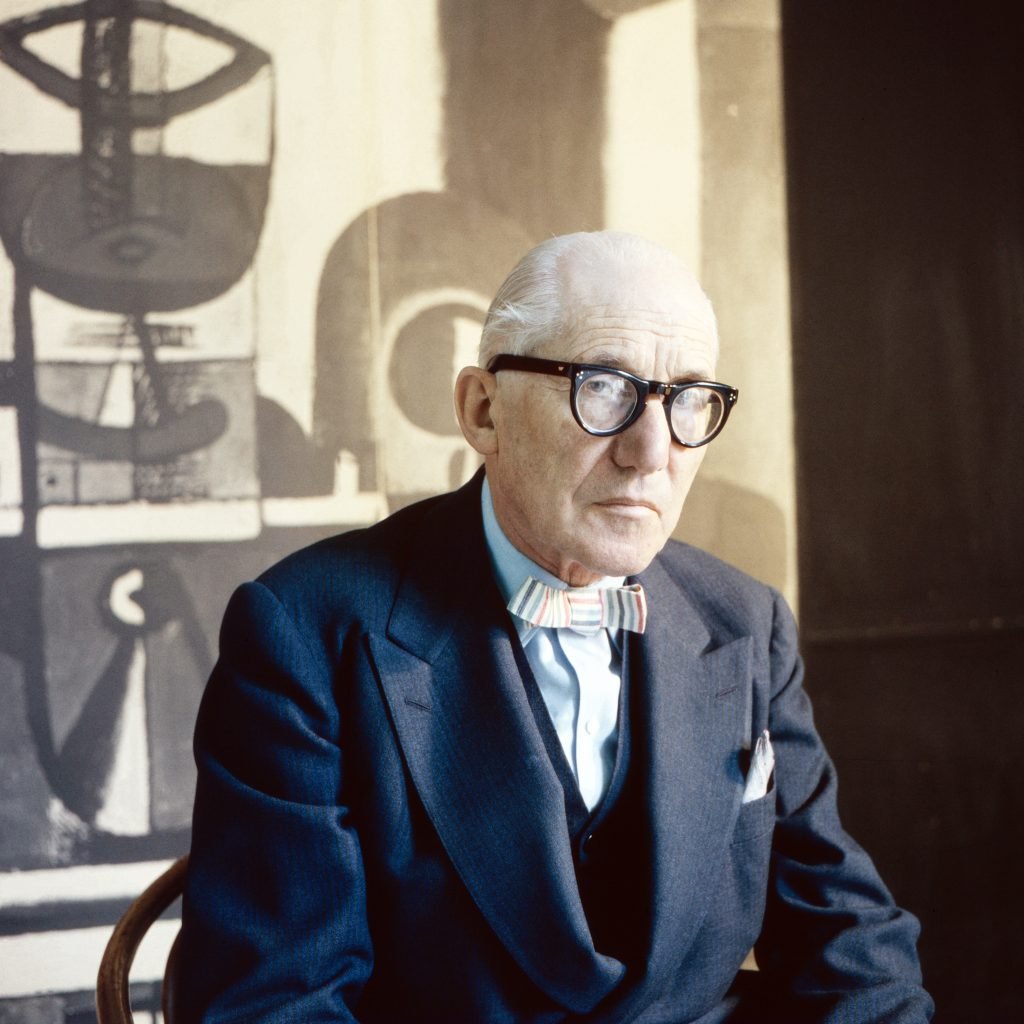
Le Corbusier at his studio, France (c. 1960). Photo: Wolfgang Kuhn/United Archives via Getty Images.
The brash, visionary architect had a dog called Pinceau. When the schnauzer died, Le Corbusier had it skinned and tanned. The skull was preserved, a spring mechanism placed in the jaw. The skin bound his copy of Don Quixote. The location of the skull is unknown.
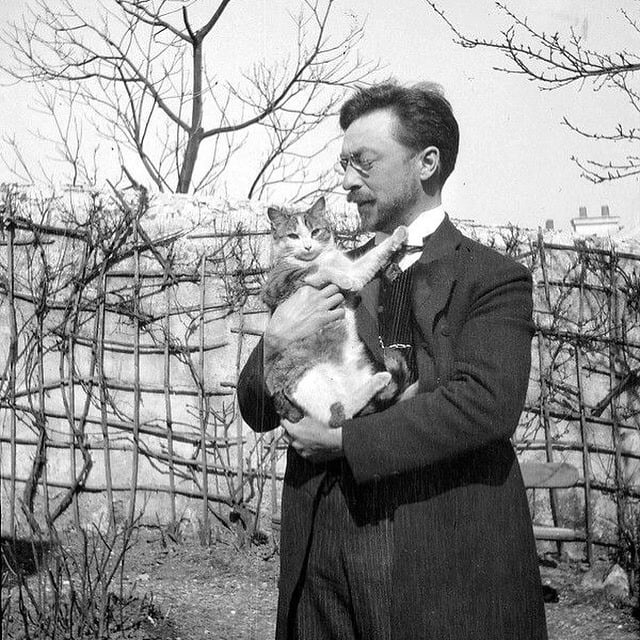
Kandinsky with his cat in the garden. Image: Bauhaus Movement Magazine.
Aside from a 1907 woodblock print titled Cat, there’s little evidence of feline—or any other animals for that matter—influencing the Russian émigré’s abstractions. But Kandinsky did have a cat called Vaska and he was very fond of it.